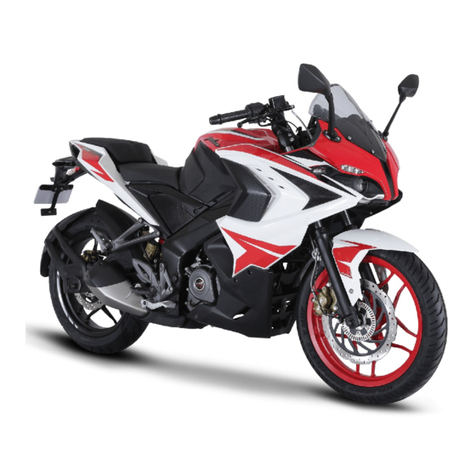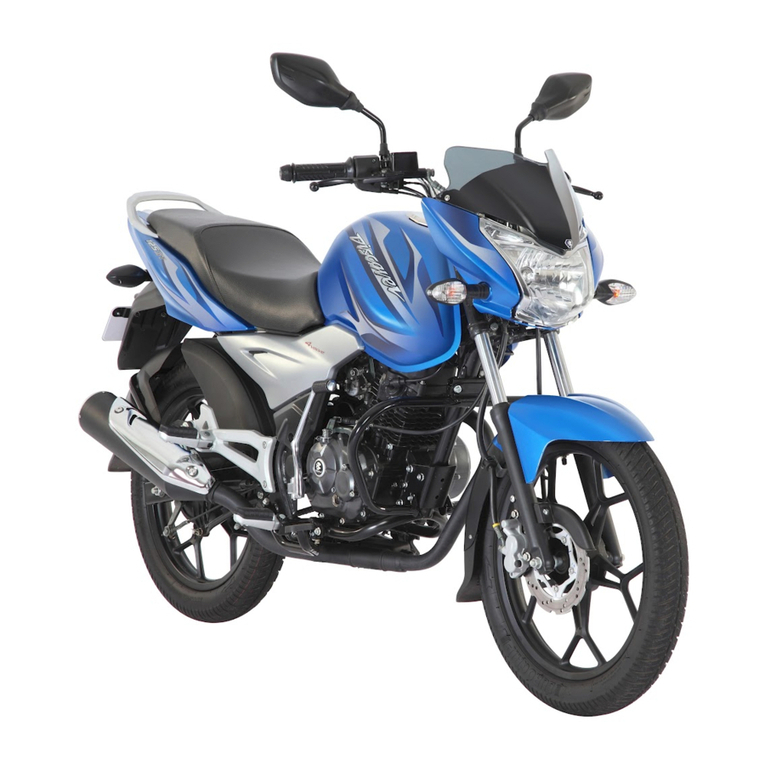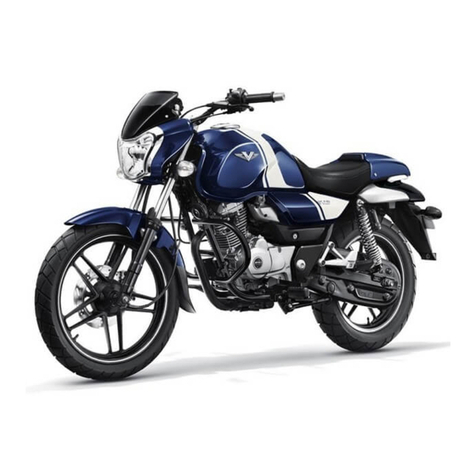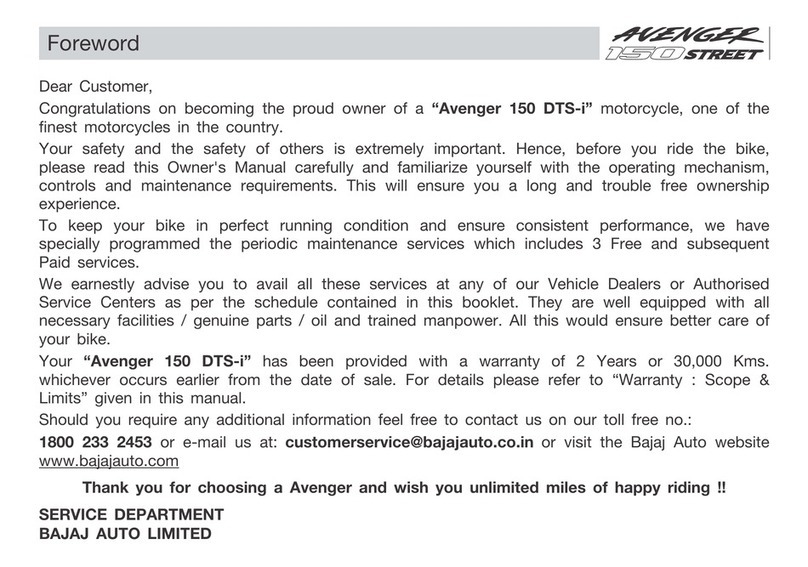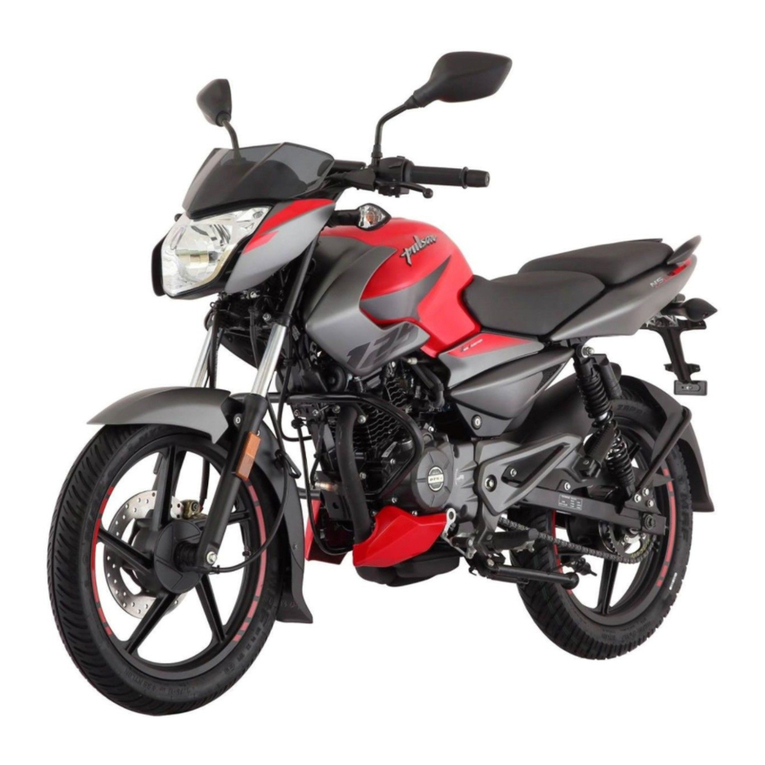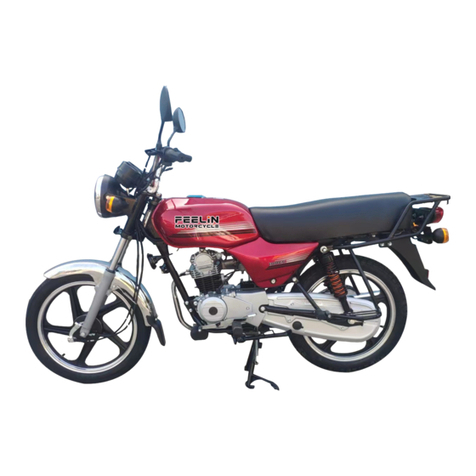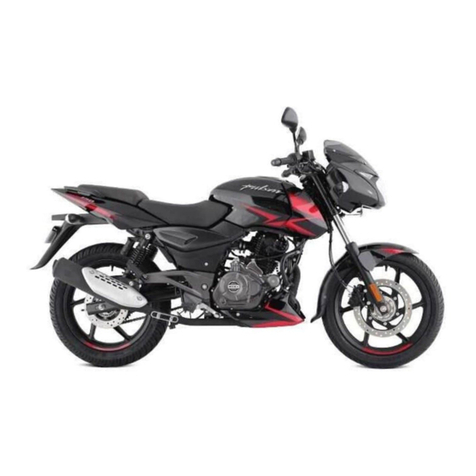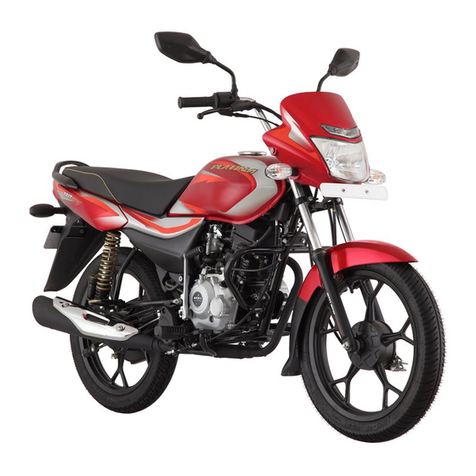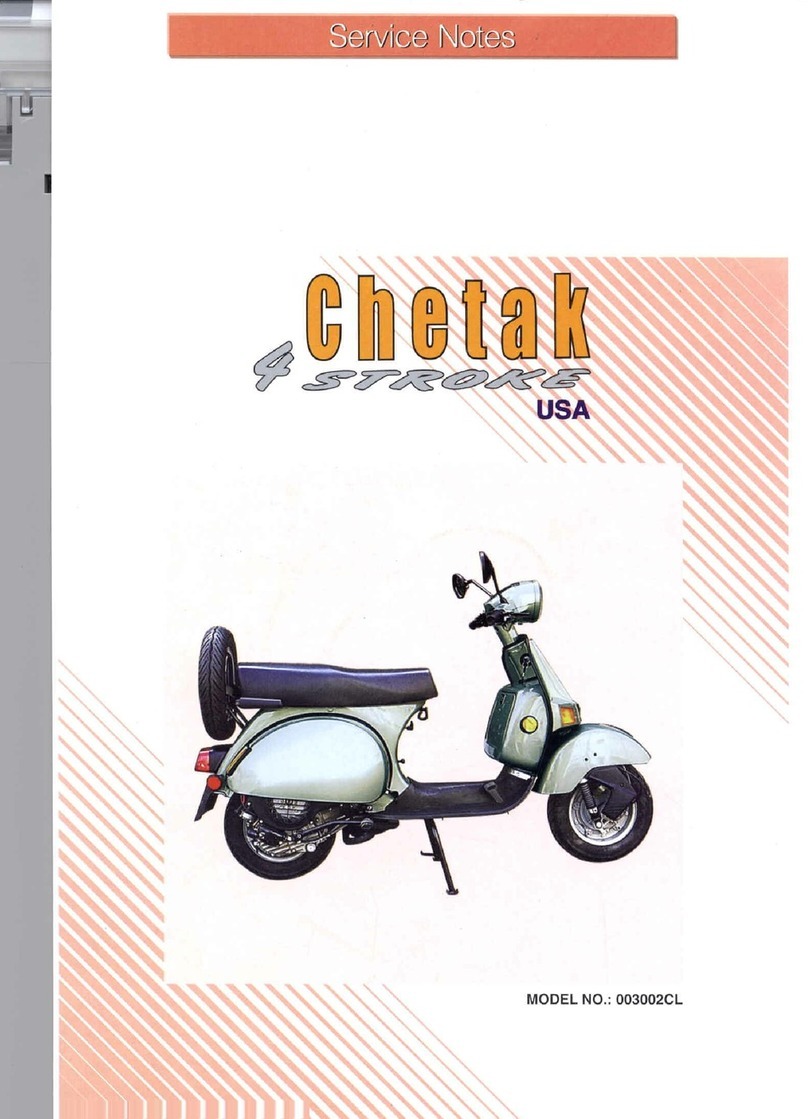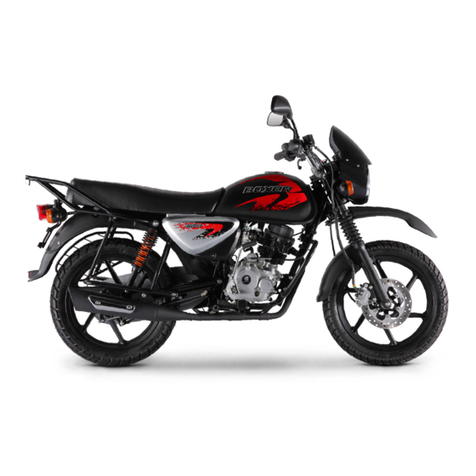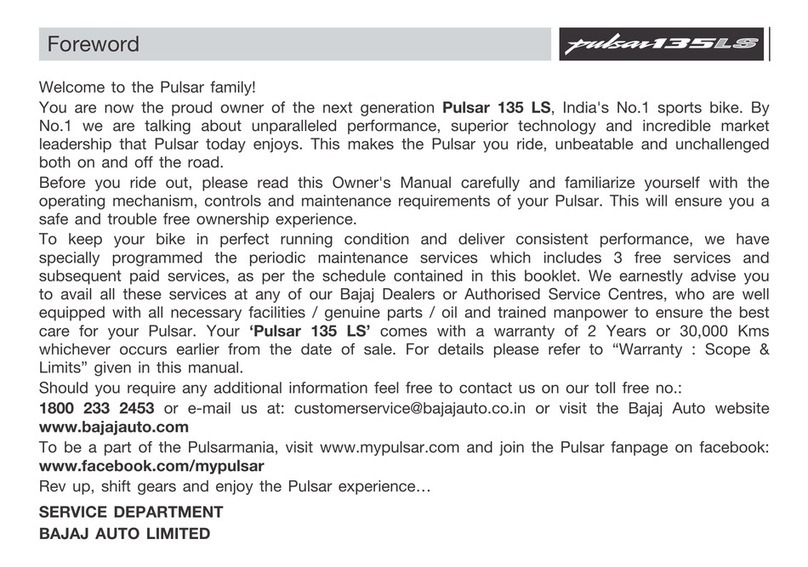
12
How to Ride Motorcycle / Safe Riding Tips
Braking :
• Close the throttle completely, leaving the
clutch engaged (except while shifting
gears) so that the engine braking will help
slow down the motorcycle.
• Shift down one gear at a time so that you
are in Neutral when you come to a
complete stop.
• When stopping, always apply both brakes
at the same time. Normally the front brake
should be applied a little more than the
rear. De-clutch as necessary to keep the
engine from stalling.
• Never lock the brakes, or it will cause the
tyre to skid. When cornering, use brakes
judiciously and do not de-clutch. Reduce
your speed before you get into the corner.
• For emergency braking, disregard
downshifting, and concentrate on applying
the brakes as hard as possible without
skidding.
Stopping the vehicle :
• Close the throttle completely.
• Shift the transmission into neutral.
• Bring the vehicle to complete stop.
• Turn the ignition switch off.
• Support the motorcycle on a firm level
surface with the center or side stand &
lock the steering.
Parking :
• Shift the transmission into neutral and turn
the ignition switch OFF.
• Support the motorcycle on a firm level
surface with the center or side stand.
Caution : Do not park on a soft or steeply
inclined surface other wise the motorcycle
may fall over.
Safe Riding Tips
• Wear A Helmet : Always wear a helmet
while riding. Your helmet should conform
as per your country standards.
• Read thoroughly the instructions in this
manual and follow them carefully.
• Avoid unnecessary accessories for the
safety of both rider and other motorists.
• Get familiar with traffic rules & regulations
in your states as well as general traffic
signs.
• Do not overload your vehicle.
13
Safe Riding Tips / Daily Safety Checks
• Familiarise yourself well with starting,
acceleration and braking of the vehicle.
• When applying the brakes, use both, the
front and rear brakes. Applying only one
brake may cause the rider to loose control,
use more of the front than rear judiciously
depending on road surface conditions.
• Riding at proper speed and avoiding
unnecessary acceleration and braking are
important not only for safety and low fuel
consumption, but also for longer life of the
vehicle and smooth operation.
• During rainy season ride the vehicle more
cautiously. Remember vehicles skid more
easily during light showers.
• Drive cautiously. Start early and reach your
destination safely.
• Always carry vehicle registration papers,
insurance and a valid driving licence with
you.
• Rainy Season Care : Fit & Finish Parts
It is suggested to customer to take
appropriate care in area of heavy
monsoon or high rainfall area.
• Enough fuel level for planned distance of
journey. No fuel leakage in fuel lines.
n
• Engine oil level (bet upper - lower level mark)
• Throttle cable play of 2 - 3 mm. Smooth
operation & positive return to closed position,
• Brake Pedal Play - 20 to 30 mm.
• Wear lining Indicator within usable range.
no brake dragging.
• Drive Chain slack of 25 to 35 mm adequately
lubricated.
• Function of all lights & horn
• Smooth steering movement without restriction
• Clutch lever play - 2 to 3 mm
• Both stands return to their fully up position.
• Correct inflation pressure in both tyres
adequate tread depth - no cracks / cuts.
• Correct rear viewing span adjustment of
mirror.
The appropriate surface preventive coat to
avoid rusting / poor surface finish on
account of adverse atmospheric conditions.
Daily safety checks:
